
The three-storey Ashton New Warehouse stands on the wharf on the southern side of Portland Place. The original building was destroyed by fire and the present building was built as a replica of the original, which now houses the excellent Portland Basin Museum. As originally built, the warehouse was constructed with timber floors supported by cast-iron columns. A short arm of the Ashton Canal flowed directly into the building through three archways so that boats could load and unload undercover. An interesting feature was that a waterwheel powered the hoists that transferred goods to and from the upper floors.
The warehouse dates from 1834 and during the early years of operation traffic was increasing and it became impractical to continue using the original hand-operated hoists. Consequently, the hoisting system was mechanised by the introduction of a waterwheel between 1839/41, which was constructed at the eastern end of the wharf adjoining Portland Street South.
The wheel was supplied with water from the Ashton Canal via a leat that runs across the front of the warehouse below the wharf. The water flow was controlled by a penstock, which was operated from within the warehouse. The water then flowed away from the wheel pit through a tailrace tunnel that sloped down to the river Tame. The outlet into the river can still be seen but nowadays water is pumped back into the canal.
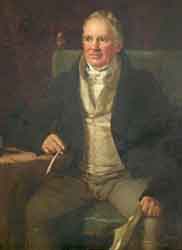
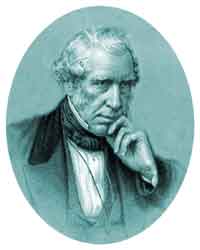
This wheel is classified as a 'high breastshot' suspension wheel because water entered the buckets from above axle level. It was of a type developed by Thomas Cheek Hewes (1768-1832), a millright and machine maker of Portland Street, Manchester, working in association with William Strutt FRS (1756-29 Dec 1830) of Derby. For a short but crucial period (1816/17) he employed William Fairbairn (19 Feb 1789-18 Aug 1874) who went on to become an eminent engineer. William Fairbairn further improved the design of suspension wheels by increasing their efficiency. He achieved this by ventilating the buckets to cause the water to move more freely but it should be noted that the wheel at Ashton New Warehouse did not have ventilated buckets.
Suspension wheels were introduced to overcome the difficulty of transmitting high power at low speeds. This obstacle was overcome by taking power from the wheel at its periphery, where a segmented gear wheel drove a smaller pinion wheel and thus the secondary shaft rotated at a much higher speed. The shaft supporting the waterwheel then only had to be strong enough to support the weight of the wheel itself. Additionally, the spokes of the wheel could be of considerably smaller section, as they were no longer used to transmit any power. Waterwheels of this type can be likened to bicycle wheels where the spokes are in tension rather than compression.
The wheel was of cast and wrought-iron construction and it was 24 feet in diameter by 3 feet wide and it cost £1,078 0s 6½d when it was originally built. It consisted of two cast-iron hubs mounted on a cast-iron shaft, each hub having radial sockets to locate the wrought-iron spokes. The spokes provided the necessary support for the rim (or shroud) and the wrought-iron buckets. The main drive gear of the wheel had 416 cycloidal teeth and it was comprised of cast-iron segments fastened to the outer face of the rim.
When the Ashton Canal fell into disuse, the waterwheel became derelict and the buckets, in particular, suffered heavily from corrosion. Fortunately, it was restored and rebuilt during 1987/88.
Portland Basin Conservation Area
Portland Basin lies to the south west of the town centre of Ashton-under-Lyne and it is centred on the river Tame, Ashton Canal and Peak Forest Canal. It is bounded by Victoria Street and Hill Street
to the north, Cavendish Street to the east, Alma Street and the railway line of the former Great Central Railway/Manchester, Sheffield and Lincolnshire Railway to the south and Margaret Street to the west.
The conservation area around Portland Basin includes:
Canal aqueduct over the river Tame: Grade II, List Entry No. 1356423.
Towpath bridge over the entrance to the Tame Aqueduct: Grade II, List Entry No. 1162777.
Cavendish Mill: Grade II*, List Entry No. 1067948.
Park Parade railway viaduct, eastern crossing of the river Tame: Grade II, List Entry No. 1068074.
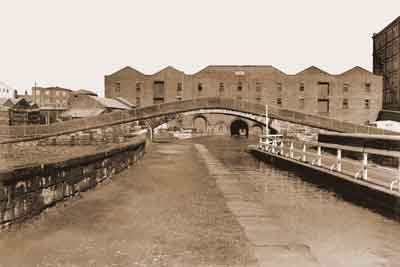 |
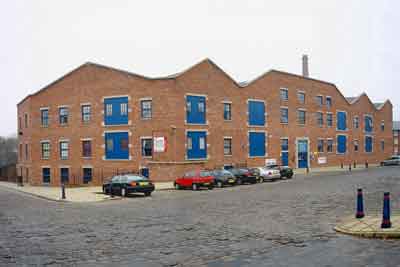 |
The original Ashton New Warehouse viewed looking along the Tame Aqueduct from the Peak Forest Canal, 1962. The towpath bridge over the entrance to the Tame Aqueduct is in the foreground. |
The replica Ashton New Warehouse, viewed from the corner of Portland Street and Portland Place, Feb 2006. This building houses the Portland Basin Museum. |
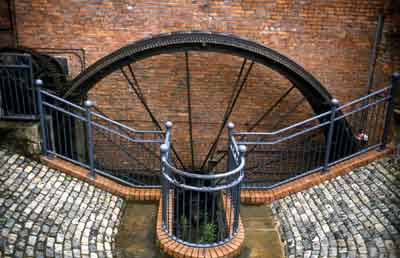 |
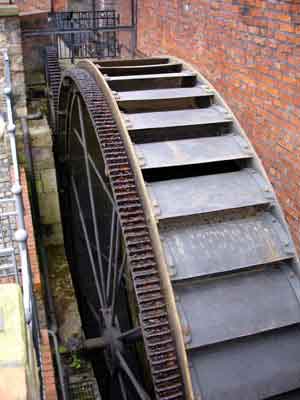 |
| The waterwheel at Ashton New Warehouse, Aug 2000. | The waterwheel at Ashton New Warehouse, Feb 2006. |
Acknowledgement
Portland Basin Museum.